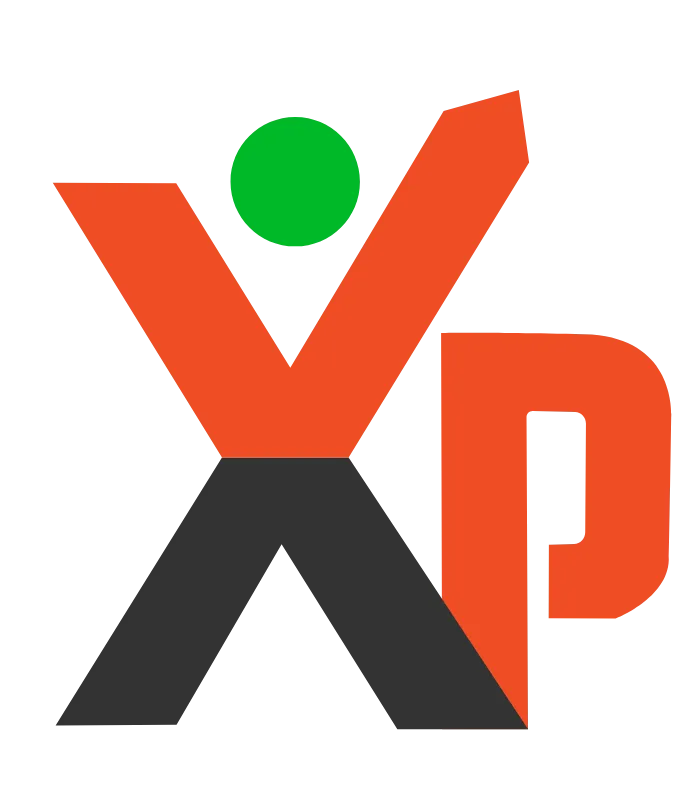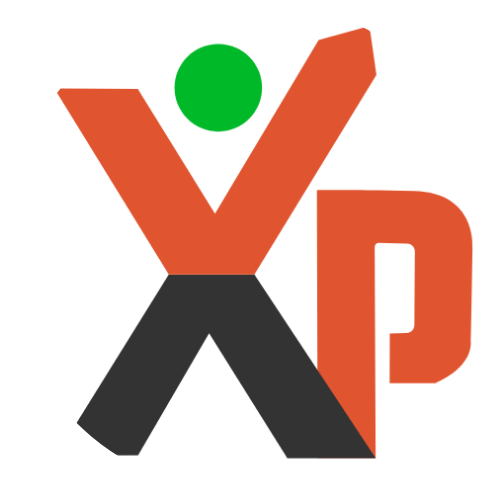20 min read 12 Best Freelance Websites in 2025

Looking to kickstart your freelance career or hire vetted professionals in 2025? These 12 freelance platforms are leading the way in connecting top talent with businesses worldwide.
1. Xp Freelancer
Xp Freelancer is a growing platform in 2025, offering vetted freelancers across diverse categories like SEO, graphic design, development, writing, video editing, and more. Designed for quality and trust, Xp Freelancer ensures each seller is verified, providing a reliable space for both freelancers and clients.
For freelancers, Xp Freelancer makes it easy to showcase your services, communicate directly with buyers, and receive secure payments via Stripe. The platform focuses on legitimacy, meaning no fake gigs or sellers, and every freelancer goes through an approval process before listing services.
For clients, Xp Freelancer offers a curated experience to find skilled professionals without sifting through low-quality offers. The user-friendly interface and streamlined process make project hiring fast and simple.
Xp Freelancer Pros (for Freelancers):
✅ Vetted seller profiles ensure credibility.
✅ Zero commission fees; freelancers keep what they earn.
✅ Payment protection via Stripe.
✅ Opportunities in trending niches like self-storage marketing and Twitch setups.
✅ Fast-growing marketplace with less competition than bigger platforms.
Xp Freelancer Pros (for Clients):
✅ Trusted and vetted freelancers.
✅ Wide range of categories from SEO to app development.
✅ Easy-to-use interface and transparent pricing.
✅ Secure payment system with clear project milestones.
Xp Freelancer Cons (for Freelancers):
❌ Requires verification to list services, which takes time.
❌ Newer platform with a smaller buyer base (still growing fast!).
Xp Freelancer Cons (for Clients):
❌ Limited freelancer pool compared to larger platforms (but quality over quantity).
Cost: Free to join for freelancers and clients.
Payment (for Freelancers): Payments are processed securely through Stripe, with instant payout options available.
2. Fiverr
On Fiverr, buyers can easily find and hire freelancers by exploring gig descriptions, profiles, and client reviews. With over 700 categories, it’s a versatile platform for both businesses and freelancers.
Freelancers benefit from Fiverr's tools like guided onboarding, free courses, and market research. Top sellers can earn Fiverr Pro status for exclusive perks. In 2024, Fiverr introduced Neo, an AI tool that connects clients with freelancers, reportedly tripling conversion rates.
Fiverr Pros (for Freelancers):
✅ Set your own packages and pricing.
✅ No upfront fees to bid on projects.
✅ Built-in portfolio and AI matching tools.
✅ Pro and Seller Plus programs for added benefits.
Fiverr Pros (for Clients):
✅ Access to 700+ categories.
✅ Easy gig browsing with client reviews.
✅ AI-powered search with Fiverr Neo.
Fiverr Cons (for Freelancers):
❌ Tough competition in saturated niches.
❌ 20% commission on all earnings.
❌ Slow initial growth without reviews.
Fiverr Cons (for Clients):
❌ Varying quality among freelancers.
❌ Clear communication is key to avoid misunderstandings.
Cost: 20% commission per completed gig.
Payment (for Freelancers): 14-day clearance (7 days for top-rated sellers), with payouts via PayPal, Payoneer, or bank transfer (US only).
3. 99designs
99designs is a niche platform focused solely on graphic design. Freelancers can enter contests or work directly with clients. Contests allow multiple freelancers to submit work, and the client chooses their favorite design.
99designs Pros (for Freelancers):
✅ Participate in contests for exposure and portfolio building.
✅ Work with a global client base.
✅ Direct project opportunities as your reputation grows.
99designs Pros (for Clients):
✅ Explore multiple design concepts.
✅ Access a variety of designers and styles.
✅ Direct communication for feedback and revisions.
99designs Cons (for Freelancers):
❌ Contests are competitive, and there's no guarantee of winning.
❌ High competition makes it tough for beginners.
❌ Platform fees based on designer level.
99designs Cons (for Clients):
❌ Contests can take time and require several feedback rounds.
❌ Quality varies by designer.
Cost: Freelancers pay a client introduction fee (up to $100) and 5-15% platform fees depending on their level.
Payment (for Freelancers): Payments via PayPal or Payoneer (up to 10 business days).
4. LinkedIn Services Marketplace
LinkedIn Services Marketplace taps into LinkedIn’s vast professional network to connect freelancers with clients. It’s a great option for freelancers already active on LinkedIn.
LinkedIn Pros (for Freelancers):
✅ Free to list services and connect with clients.
✅ Tap into your professional network for leads.
✅ Trusted brand name adds credibility.
LinkedIn Pros (for Clients):
✅ Access to vetted professionals.
✅ View detailed service pages and proposals.
✅ Leverage existing network connections.
LinkedIn Cons (for Freelancers):
❌ No built-in payment or project management tools.
❌ Limited review system.
❌ Premium features cost $39–$59/month.
LinkedIn Cons (for Clients):
❌ Manual management of contracts and payments.
❌ No built-in tools for dispute resolution.
Cost: Free to use for both freelancers and clients.
Payment (for Freelancers): Freelancers handle payments independently.
5. Toptal
Toptal connects the top 3% of freelancers with premium clients. The platform focuses on high-end talent in software development, design, finance, and project management.
Toptal Pros (for Freelancers):
✅ Premium rates with no platform fees.
✅ Work with Fortune 500 companies.
✅ High-value, long-term projects.
Toptal Pros (for Clients):
✅ Curated network of elite professionals.
✅ Hassle-free search and matching process.
✅ Ideal for complex, high-value projects.
Toptal Cons (for Freelancers):
❌ Intense screening process (2–5 weeks).
❌ Limited to specific industries.
❌ Extended payment terms (4–6 weeks).
Toptal Cons (for Clients):
❌ Premium costs for access.
❌ Limited talent pool in niche fields.
Cost: Free for freelancers; clients pay for premium talent access.
Payment (for Freelancers): Direct bank transfer, PayPal, Payoneer, Wise, or cryptocurrency (15–30 days).
6. Upwork
Upwork remains one of the largest freelance marketplaces, offering projects across countless industries. Freelancers submit proposals, and clients evaluate them before hiring.
Upwork Pros (for Freelancers):
✅ Access to global clients.
✅ Escrow payments and dispute resolution.
✅ Long-term client relationships with reduced fees over time.
Upwork Pros (for Clients):
✅ Huge talent pool across industries.
✅ Messaging, time-tracking, and payment tools.
✅ Escrow system for secure transactions.
Upwork Cons (for Freelancers):
❌ Competitive, especially for newcomers.
❌ 20% fee on initial $500 earned per client.
❌ "Connects" required for proposal submissions.
Upwork Cons (for Clients):
❌ Projects may require thorough vetting.
❌ 5% client fee on payments.
❌ Communication is key to avoid disputes.
Cost: Freelancers pay 10% fees (20% on the first $500 per client). Clients pay a 5% fee.
Payment (for Freelancers): Funds released 5–10 days after the workweek. Payment methods include direct bank transfer, PayPal, Payoneer, and more.
7. Freelancer.com
Freelancer.com is one of the largest freelance marketplaces, with millions of users worldwide. It offers a wide range of job categories, including writing, design, marketing, programming, and more.
Freelancers can bid on projects posted by clients or participate in contests to showcase their skills and land work. The platform provides time-tracking tools, milestone payments, and dispute resolution, offering a secure environment for both freelancers and clients.
Freelancer.com Pros (for Freelancers):
- Access to a massive client base with diverse job opportunities.
- Bidding system offers flexibility in pricing and proposals.
- Ability to participate in contests to win projects and earn recognition.
- Tools for time tracking and secure milestone payments.
Freelancer.com Pros (for Clients):
- A large talent pool across various industries and skill levels.
- Competitive bidding can help control project costs.
- Milestone payments protect client investments until work is completed.
Freelancer.com Cons (for Freelancers):
- High competition can make it challenging to secure projects.
- Free accounts have limited bids (8 per month); premium plans are required for more.
- Platform fees can reduce earnings (fees start at 10% per project).
Freelancer.com Cons (for Clients):
- Quality varies among freelancers; thorough vetting is necessary.
- Some freelancers may over-promise in competitive bids.
Cost (for Freelancers):
- Free to sign up, but takes a 10% commission on fixed-price projects (or $5, whichever is greater) and 10% on hourly projects.
Payment (for Freelancers):
- Funds are released after project milestones are approved. Payments can be withdrawn via PayPal, Skrill, or wire transfer.
8. PeoplePerHour
PeoplePerHour is a UK-based freelance marketplace popular with small businesses and startups. It connects clients with freelancers who offer "Hourlies"—fixed-price services for specific tasks—and custom proposals.
Freelancers can browse projects, submit proposals, and get paid via an escrow system. Clients can review portfolios and ratings before hiring.
PeoplePerHour Pros (for Freelancers):
- Option to offer fixed-price "Hourlies" to attract buyers.
- Secure payments through an escrow system.
- Access to a global client base, though it's most popular in the UK.
PeoplePerHour Pros (for Clients):
- Easy to hire freelancers for both short-term and long-term projects.
- Hourlies offer predefined services with clear deliverables and pricing.
- Project streams simplify communication and file sharing.
PeoplePerHour Cons (for Freelancers):
- Service fees start at 20% and reduce to 3.5% for long-term relationships.
- High competition in popular categories.
PeoplePerHour Cons (for Clients):
- Platform fees can increase project costs.
- Quality varies; reviewing freelancer portfolios is essential.
Cost (for Freelancers):
- 20% service fee on the first £250 billed to a client. The fee decreases to 7.5% up to £5,000, and 3.5% after.
Payment (for Freelancers):
- Payments are released from escrow once the client approves the work. Withdrawals are made through PayPal or Payoneer.
9. Guru
Guru is a flexible freelance marketplace offering various categories, including development, design, writing, marketing, and more. It caters to both small businesses and enterprises looking to hire freelancers.
Freelancers can create detailed profiles, apply for jobs, and use Guru’s WorkRoom to manage projects, share documents, and track progress.
Guru Pros (for Freelancers):
- Flexible payment terms (hourly, task-based, milestones, recurring).
- Secure SafePay system ensures timely payment.
- Detailed profiles and portfolios improve freelancer visibility.
Guru Pros (for Clients):
- Various payment methods and agreements to suit different projects.
- WorkRoom provides a collaborative space for communication and document sharing.
- SafePay protects clients by holding funds until work is approved.
Guru Cons (for Freelancers):
- Membership plans are required for more bids and visibility.
- Platform fees range from 5% to 9%, depending on membership level.
Guru Cons (for Clients):
- Limited project discovery without a paid employer account.
- Quality control varies depending on freelancers' experience levels.
Cost (for Freelancers):
- Free membership with limited bids. Premium plans range from $11.95 to $49.95 per month.
- Platform fees start at 9% but can decrease to 5% with a premium plan.
Payment (for Freelancers):
- Payments are processed through PayPal, Payoneer, and wire transfer after project approval.
10. DesignCrowd
DesignCrowd is another crowd-sourced design platform, offering services such as logo design, business cards, websites, and more. Clients can host design contests or hire freelancers directly.
For freelancers, contests provide a way to showcase their design talents and gain exposure, while direct projects offer a more straightforward path to paid work.
DesignCrowd Pros (for Freelancers):
- Opportunity to participate in global design contests.
- Large pool of design projects in various categories.
- Easy-to-use interface and submission tools.
DesignCrowd Pros (for Clients):
- Affordable access to many design concepts.
- Ability to work with individual designers or run contests.
- Refund guarantee if no suitable design is submitted.
DesignCrowd Cons (for Freelancers):
- Intense competition in contests with no guarantee of payment unless selected.
- Fees deducted from winnings (15% platform fee plus a 4% transaction fee).
DesignCrowd Cons (for Clients):
- Quality may vary; selecting the right designer requires reviewing submissions carefully.
- Contests can take time to complete, with multiple revision rounds.
Cost (for Freelancers):
- DesignCrowd charges 15% from the freelancer’s winnings, plus an additional 4% processing fee.
Payment (for Freelancers):
- Payments are processed via PayPal or Payoneer after the client approves the work.
11. Outsourcely
Outsourcely focuses on connecting startups with remote freelancers from around the world. Unlike traditional freelance sites, Outsourcely allows direct communication and hires without taking a commission.
Freelancers create profiles, and clients post jobs or search for candidates based on skills and experience. Payments are handled directly between the freelancer and the client.
Outsourcely Pros (for Freelancers):
- No platform fees or commissions.
- Direct hiring leads to better long-term client relationships.
- Focus on remote work and flexible jobs.
Outsourcely Pros (for Clients):
- Direct access to freelancers without middleman fees.
- Access to global remote talent.
- Suitable for startups and businesses looking for affordable hiring solutions.
Outsourcely Cons (for Freelancers):
- No built-in payment protection or escrow services.
- Requires negotiation and contract management outside the platform.
Outsourcely Cons (for Clients):
- No vetting or verification of freelancers; requires due diligence.
- No dispute resolution or mediation services.
Cost (for Freelancers):
- Free basic membership. Premium memberships start at $19 per month for added visibility and job applications.
Payment (for Freelancers):
- Payments are managed directly with the client through methods like PayPal, Payoneer, or direct bank transfer.
12. TaskRabbit
TaskRabbit focuses on local freelance jobs and gigs, such as furniture assembly, moving help, cleaning, and handyman services. It’s ideal for freelancers who prefer in-person work over remote freelancing.
Freelancers (Taskers) create profiles listing their skills and availability. Clients can browse profiles, hire taskers, and schedule jobs.
TaskRabbit Pros (for Freelancers):
- Flexible work opportunities with direct local clients.
- Set your own rates and availability.
- In-person jobs in various categories.
TaskRabbit Pros (for Clients):
- Convenient platform to find reliable help for household and business tasks.
- Transparent pricing and tasker reviews.
- Same-day services often available.
TaskRabbit Cons (for Freelancers):
- Platform fees and background check requirements.
- Jobs depend on location availability.
TaskRabbit Cons (for Clients):
- Service availability depends on the area.
- Premium costs for urgent tasks.
Cost (for Freelancers):
- TaskRabbit takes a 15% commission on the total task cost.
Payment (for Freelancers):
- Payments are processed via direct deposit through Stripe.
Choosing the right freelance platform depends on your skills, goals, and preferred work style. Whether you’re looking for creative gigs on 99designs, remote work on Outsourcely, or premium clients on Toptal, there’s a platform tailored for every type of freelancer.






































































